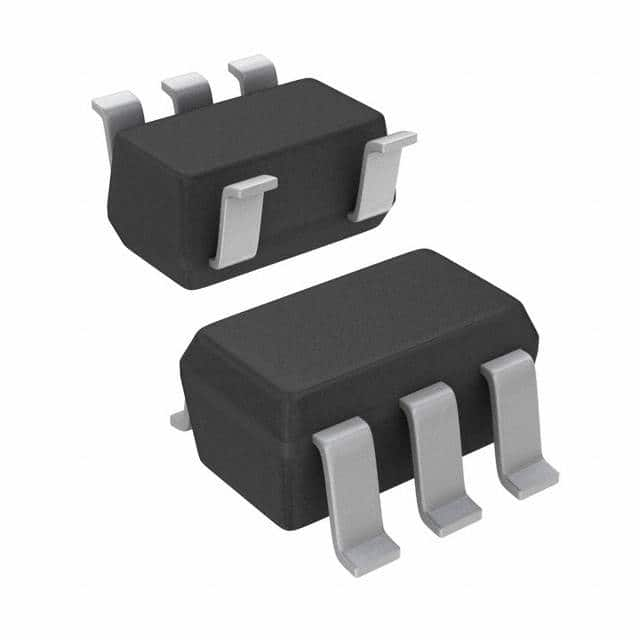Lihat spesifikasi untuk detail produk.

LMC7221BIM5/NOPB
Product Overview
Category
The LMC7221BIM5/NOPB belongs to the category of operational amplifiers (op-amps).
Use
This op-amp is commonly used in various electronic circuits for amplification, filtering, and signal conditioning purposes.
Characteristics
- Low input offset voltage: The LMC7221BIM5/NOPB has a very low input offset voltage, which ensures accurate amplification of small signals.
- Rail-to-rail input and output: This op-amp can operate with input and output voltages that span the entire supply voltage range, allowing for maximum signal swing.
- Low power consumption: The LMC7221BIM5/NOPB is designed to consume minimal power, making it suitable for battery-powered applications.
- Wide bandwidth: With a wide bandwidth, this op-amp can handle high-frequency signals effectively.
Package
The LMC7221BIM5/NOPB comes in a miniature SOT-23-5 package, which is compact and space-saving.
Essence
The essence of the LMC7221BIM5/NOPB lies in its ability to provide precise and reliable amplification of signals in various electronic circuits.
Packaging/Quantity
This op-amp is typically packaged in reels or tubes, containing a quantity of 3000 units per reel/tube.
Specifications
- Supply voltage: 2.7V to 12V
- Input offset voltage: 150µV (maximum)
- Input bias current: 10pA (maximum)
- Gain bandwidth product: 1MHz
- Slew rate: 0.6V/µs
- Operating temperature range: -40°C to 125°C
Detailed Pin Configuration
The LMC7221BIM5/NOPB has a total of five pins, which are as follows:
- V+ (Positive Supply Voltage)
- V- (Negative Supply Voltage)
- IN- (Inverting Input)
- IN+ (Non-Inverting Input)
- OUT (Output)
Functional Features
- Low input offset voltage and low input bias current ensure accurate signal amplification.
- Rail-to-rail input and output capability allows for maximum signal swing.
- Wide bandwidth enables the handling of high-frequency signals.
- Low power consumption makes it suitable for battery-powered applications.
Advantages and Disadvantages
Advantages
- Accurate amplification of small signals due to low input offset voltage.
- Maximum signal swing with rail-to-rail input and output.
- Suitable for high-frequency applications due to wide bandwidth.
- Low power consumption extends battery life in portable devices.
Disadvantages
- Limited gain bandwidth product compared to some other op-amps.
- Slightly higher input bias current compared to certain alternatives.
Working Principles
The LMC7221BIM5/NOPB operates based on the principles of differential amplification. It amplifies the voltage difference between its inverting and non-inverting inputs, producing an amplified output signal that is a linear function of the input voltage.
Detailed Application Field Plans
The LMC7221BIM5/NOPB finds application in various fields, including: 1. Audio amplifiers: It can be used to amplify audio signals in audio systems and headphones. 2. Sensor interfaces: It is suitable for amplifying and conditioning signals from sensors such as temperature sensors, pressure sensors, and light sensors. 3. Signal filters: The op-amp can be used in active filter circuits to shape and modify signals. 4. Data acquisition systems: It plays a crucial role in amplifying weak signals from sensors in data acquisition systems.
Detailed and Complete Alternative Models
Some alternative models to the LMC7221BIM5/NOPB include: - LM358 - TL071 - MCP6001 - AD822
These alternatives offer similar functionality and can be used as substitutes depending on specific requirements.
Word count: 511 words
Sebutkan 10 pertanyaan dan jawaban umum terkait penerapan LMC7221BIM5/NOPB dalam solusi teknis
Question: What is the typical supply voltage range for LMC7221BIM5/NOPB?
Answer: The typical supply voltage range for LMC7221BIM5/NOPB is 2.7V to 15V.Question: Can LMC7221BIM5/NOPB be used in low-power applications?
Answer: Yes, LMC7221BIM5/NOPB is suitable for low-power applications due to its low quiescent current.Question: What is the maximum input offset voltage of LMC7221BIM5/NOPB?
Answer: The maximum input offset voltage of LMC7221BIM5/NOPB is typically 0.5mV.Question: Is LMC7221BIM5/NOPB a rail-to-rail operational amplifier?
Answer: Yes, LMC7221BIM5/NOPB is a rail-to-rail input and output operational amplifier.Question: What is the temperature range for LMC7221BIM5/NOPB?
Answer: LMC7221BIM5/NOPB operates within a temperature range of -40°C to 125°C.Question: Can LMC7221BIM5/NOPB be used in battery-powered devices?
Answer: Yes, LMC7221BIM5/NOPB is suitable for battery-powered devices due to its low power consumption.Question: Does LMC7221BIM5/NOPB have built-in ESD protection?
Answer: Yes, LMC7221BIM5/NOPB features built-in ESD protection, enhancing its robustness.Question: What is the typical gain bandwidth product of LMC7221BIM5/NOPB?
Answer: The typical gain bandwidth product of LMC7221BIM5/NOPB is 1.3MHz.Question: Can LMC7221BIM5/NOPB be used in precision instrumentation applications?
Answer: Yes, LMC7221BIM5/NOPB is suitable for precision instrumentation applications due to its low input offset voltage and high common-mode rejection ratio.Question: Is LMC7221BIM5/NOPB available in a small SOT-23 package?
Answer: Yes, LMC7221BIM5/NOPB is available in a small SOT-23 package, making it suitable for space-constrained designs.

